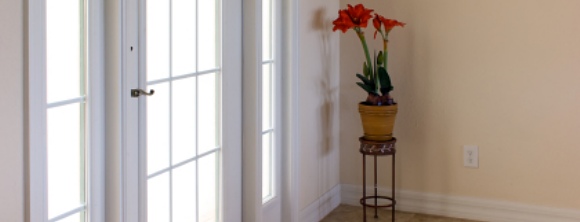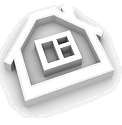Door Design & Styles

Many kinds of doors have specific names, depending on their purpose. The most common variety of door is the single-leaf door which consists of a single rigid panel that fills the doorway. Many variations on this basic design are possible, such as the double-leaf door or double doors and French doors that have two adjacent independent panels hinged on each side of the doorway.
- A Half Door or Dutch Door or Stable Door
- Saloon Doors
- A Blind Door or Gibb Door
- A Barn Door
- A French Door
- A Louvred Door
- A Composite Door
- A Flush Door
- A Moulded Door
- A Ledge and Brace Door
- A Wicket Door
- A Bifold Door
- A Sliding Glass Door
- Australian Doors
- A False Door
is divided in half horizontally. Traditionally the top half can be opened to allow a horse or other animal to be fed, while the bottom half remained closed to keep the animal inside. This style of door has been adapted for homes.
are a pair of lightweight swing doors often found in public bars, and especially associated with the American west. Saloon doors, also known as cafe doors, often use bidirectional hinges which close the door regardless of which direction it is opened by incorporating springs. Saloon doors that only extend from knee-level to chest-level are known as batwing doors.
is a door with no visible trim or operable components. It is designed to blend with the adjacent wall in all finishes, and visually to be a part of the wall, a disguised door.
is a door characteristic of a barn. They are often/always found on barns, and because of a barn’s immense size (often) doors are subsequently big for utility.
is a door (installed singly or as one of a matching pair or series) consisting of a frame around one or more transparent and/or translucent panels (called lights or lites); it is also called a French window as it resembles a door-height casement window. A pair of French doors does not generally include a central mullion (as do some casement window pairs), thus allowing a wider unobstructed opening. The frame typically requires a weather strip at floor level and where the doors meet to prevent water ingress. An espagnolette bolt allows the head and foot of each door to be secured in one movement. The slender window joinery maximizes light though into the room and minimizes the visual impact of the doorway joinery when considered externally.
has fixed or movable wooden fins (often called slats or louvers) which permit open ventilation while preserving privacy and preventing the passage of light to the interior. Being relatively weak structures, they are most commonly used for wardrobes and drying rooms, where security is of less importance than good ventilation, although a very similar structure is commonly used to form window shutters.
is a single leaf door that can be solid or with glass, and is usually filled with high density foam. Most composite doors carry secured by design accreditation and PAS 23 and PAS 24.
is a completely smooth door, having plywood or MDF fixed over a light timber frame, the hollow parts of which are often filled with a cardboard core material. Skins can also be made out of hardboards, the first of which was invented by William H Mason in 1924. Called Masonite, its construction involved pressing and steaming wood chips into boards. Flush doors are most commonly employed in the interior of a dwelling, although slightly more substantial versions are occasionally used as exterior doors, especially within hotels and other buildings containing many independent dwellings.
has the same structure as that of flush door. The only difference is that the surface material is a moulded skin made of MDF. Skins can also be made out of hardboards, the first of which was invented by William H Mason in 1924. Called Masonite, its construction involved pressing and steaming wood chips into boards. Molded doors are commonly used as interior doors.
is a door made from multiple vertical planks fixed together by two horizontal planks (the ledges) and kept square by a diagonal plank (the brace).
is a pedestrian door built into a much larger door allowing access without requiring the opening of the larger door. Examples might be found on the ceremonial door of a cathedral or in a large vehicle door in a garage or hangar.
is a door unit that has several sections, folding in pairs. Wood is the most common material, and doors may also be metal or glass. Bifolds are most commonly made for closets, but may also be used as units between rooms.
sometimes called an Arcadia Door or a Patio Door, is a door made of glass that slides open and sometimes has a screen (a removable metal mesh that covers the door).
are a pair of plywood swinging doors often found in Australian public houses. These doors are generally red or brown in color and bear a resemblance to the more formal doors found in other British Colonies’ public houses.
is a wall decoration that looks like a door. In ancient Egyptian architecture, this was a common element in a tomb, the false door representing a gate to the afterlife. They can also be found in the funerary architecture of the desert tribes (e.g., Libyan Ghirza).




 Looking for pricing or additional information on our Replacement Window and/or Door Installation, Siding, Dry Rot Repair or other remodeling and construction services? Please call us right now or fill out the form.
Looking for pricing or additional information on our Replacement Window and/or Door Installation, Siding, Dry Rot Repair or other remodeling and construction services? Please call us right now or fill out the form. "We want to say Thank You so much for the windows and for the work it took to install them..."
"We want to say Thank You so much for the windows and for the work it took to install them..." 